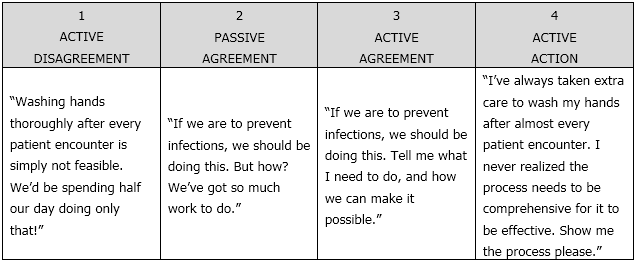How To Motivate Learners Appropriately
In designing learning experiences, we engage in an all-out effort to convince learners of the value of the topic, and therefore our program. In fact, the word WIIFM (which stands for ‘What’s In It For Me’) is so deeply engrained in our mindsets that it is not uncommon to hear statements like “Give them a strong WIIFM, and you will have them sold”. What we mean by this statement (and other such statements) is, a convincing argument will motivate learners to go through the course in an attentive manner, and hopefully, it will also keep the motivation on so that they are able and willing to put into practice what they learned in the course.
But I don’t see motivation as a switch that can be turned on or off. Rather, I see it something that is, or can be, placed anywhere along a continuum. Where a learner is on the continuum determines if, and how, you present the WHY or the WIIFM to the learner. It also determines what other strategies you would need to employ to take them further along the continuum.
Here’s what the stages look like on the continuum:

Here is an example of what this could mean:
- Active Disagreement: “Climate change is all crap; disposable plastics were invented for mankind’s benefit.”
- Passive Agreement: “I know I should quit smoking, but somehow I’m never able to.”
- Active Agreement: “I can’t wait to get started on the new routine. Tell me how I can go about it.”
- Active Action: “I’ve been doing this for more than a year now. How can I keep it going / make it better?”

What does this mean in an organizational setting?
Assume that you’re looking to create a course for medical staff on hand washing hygiene. A successful outcome would mean that doctors and nurses wash their hands thoroughly using the 12-step hand washing procedure, after every patient encounter. Medical staff in a hospital are typically overworked, and having them follow this procedure nearly 30-40 times a day is no mean feat.
Here’s what the continuum probably looks like for this topic:
- Active Disagreement: “Washing hands thoroughly after every patient encounter is simply not feasible. We’d be spending half our day doing only that!”
- Passive Agreement: “If we are to prevent infections, we should be doing this. But how? We’ve got so much work to do.”
- Active Agreement: “If we are to prevent infections, we should be doing this. Tell me what I need to do, and how we can make it possible.”
- Active Action: “I’ve always taken extra care to wash my hands after almost every patient encounter. I never realized the process needs to be comprehensive for it to be effective. Show me the process please.”

Note that we will have learners at each of the stages on the continuum, and it is for us to come up with strategies to address all of these learners. And typically, our goal is to move anyone who is at Stages 1 or 2 along to Stages 3 or 4 on the continuum.
As we can see, the course does not have to resort to any persuasion for learners who are at Stage 3 or Stage 4. It can jump in right away to the section that explains the hand washing procedure, followed by some pointers on how to effectively follow this in the midst of day-to-day patient care.
Ever wondered why you don’t think twice about the WIIFM of a YouTube video that explains how to reinstall the OS on a laptop? That’s because you probably land on the video only with a strong need for reinstalling the OS on your laptop. And you’re happy for the video to just cut the frills and go straight to explaining the process.
Those who are at Stage 2 need a bit more prompting in order to be convinced that:
- Washing hands using the 12-step procedure is critical to ensure germs are disinfected thoroughly.
- Washing hands after every patient encounter is required to make sure that germs (and thereby infection) doesn’t accidentally pass on from one patient to another.
- Both of the above are possible and practical to implement, though a little inconvenient.
And, at Stage 1, the course (along with a ton of supporting strategies) needs to be working overtime to persuade those learners who are not convinced about the importance or feasibility of the content.
So, what do you think? Are there any stages that you think I’ve left out on the continuum? And what strategies / approaches can we use to move them along, convincing them of the value of the topic, and our course? Please add your comments below.
Looking to design eLearning that changes behavior? Please get in touch with us at [email protected].









